C-stores are reporting strong sales as consumers look for value
1. The sector is recovering faster than expected
2. Inflation threatens to take a bite out of profits
3. 71% of shoppers like to know a meal’s cost before they reach the till
4. Meal deal prices are on the rise
5. Sandwiches are no longer king of the meal deal
6. More than half of home workers buy lunch from local shops

1. The sector is recovering faster than expected
Sales of food to go will hit £18.9bn in 2022, marking a 3% rise on pre-Covid levels. That’s according to the latest forecast from IGD, which expects market value to rise by 26% on pre-pandemic levels to hit £23.4bn by 2027, a significant improvement on previous predictions following lockdown.
“Foodservice businesses were the biggest beneficiaries of pent-up demand for food on-the-go last year because of all the innovation they put into working around lockdowns, such as flexible delivery solutions and click and collect offers,” says IGD senior analyst for food to go Nicola Knight.
“But as the cost-of living-crisis comes in these operators will be under pressure as they become more of a premium option compared with lower priced food-to-go alternatives from retailers or preparing food at home.”
C-store retailers are already reporting booming sales. “We’ve just finished a refit in which we added an additional hot tower with products like pizzas, breakfast baps and chicken burgers which are all selling really well,” says Nishi Patel, owner of Londis Bexley Park in Dartford.
“We’ve spread our food to go offering out more to advertise it better at the front of store. The toasty range from Country Choice is doing really well and once the kids go back to school we expect sales to increase further.”
Dee Sedani has recently bought his third One Stop store in Derbyshire, the first in his estate to offer hot food to go. “We have one tower stocking hot pies, pastries and so on,” he says. “Obviously I can’t comment on what sales were like previously, but I expect them to be a good earner for us.”
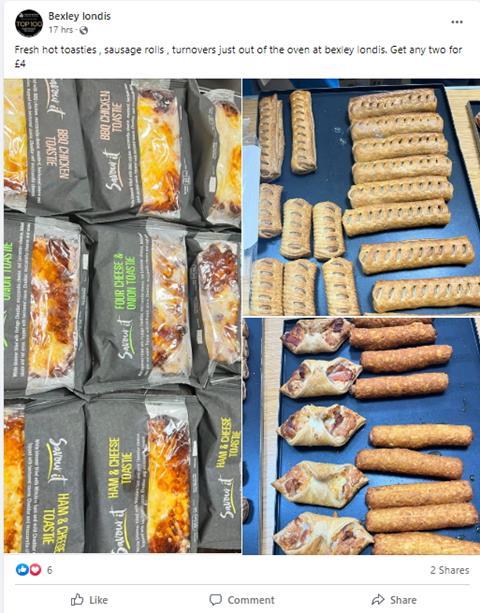
2. Inflation threatens to take a bite out of profits
There’s a fly in the pastry, however: inflation. IGD expects rising prices to be the main driver of category growth over the next 18 months. “Inflation is already affecting many consumers but until now food to go has continued to perform strongly,” says Knight.
“This will change as the true impact of rising prices really kicks in in the last quarter and takes hold next year. So, while inflation will boost the overall value of the market, volume will, at best, stay the same in 2023. The next 18 months will be a challenging period, mainly for coffee and food to go specialists, as operators attempt to balance rising costs with helping consumers to save money.”
Nishi in Bexley Park confirms that he has recently introduced price rises across his hot food offering, although he adds that multibuy deals have helped maintain demand. “We’ve raised individual prices across the range but introduced multibuys to drive volume,” he says. “We’re doing two hot bakes for £4 and two sausage rolls for £2, which are proving popular.”
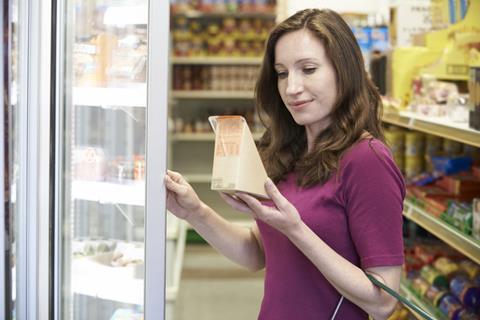
3. 71% of shoppers like to know a meal’s cost before they reach the till
Meal deals are crucial for anyone looking to corner the lunch trade. “With months of economic uncertainty ahead, value and keeping track of spending will be more important than ever,” says Abigail Nelson-Ehoff, brand manager at Urban Eat, citing an IGD ShopperVista poll [Q2 2022].
“Meal deals offer just that, and we know that shoppers expect them wherever they pick up food to go; over half of customers are on the lookout for a meal deal on their lunchtime missions. Not only that, 71% like the assurance of knowing the total cost of the meal when they get to the till, which is what a signposted deal offers.”
High numbers were already hunting for deals last year, according to Saputo Dairy UK. “Sixty per cent of c-store shoppers are adopting ‘savvy’ money saving shopper tactics,” says convenience category manager Allison Wallentin, citing IGD data from February 2021.
“A credible lunch solution might include prepacked sandwiches or wraps, salads, drinks and a range of sweet and savoury snacking solutions including traditional options as well as more nutritious choices such as fruit, nuts and dairy snacks. Retailers should also ensure that prepacked adult cheese snacks are included in the line up!” she states, pointing to Mintel research that found that 45% of adults snack on cheese at least once a week.
ADVERTISEMENT
Grenade fuelling the protein bar market
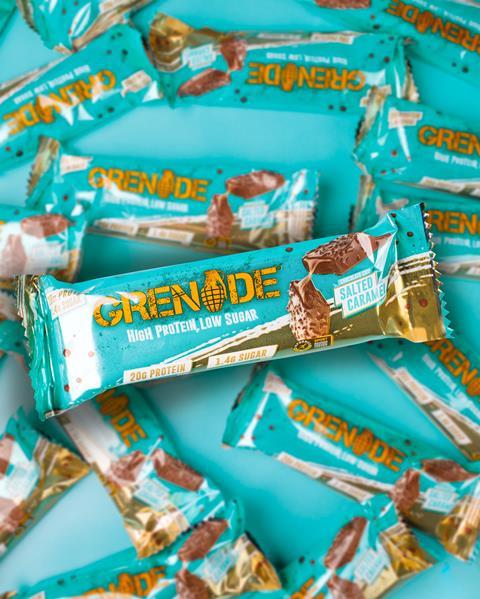
Foods that are high in protein are proving popular for both fitness-focused consumers looking to repair their muscles after exercise, and for those simply dieting who want to feel fuller, with protein taking longer to digest, so they don’t overeat.
Tasting just as good as regular confectionery but with the functional benefit of protein are Grenade’s protein bars, which are the best-selling in the UK1. Take their best-selling Chocolate Chip Salted Caramel bar, for example, which is the fastest-selling protein bar in the Convenience channel, guaranteed to turn a profit for retailers2.
Retailers can further maximise sales by placing Grenade bars in prominent store locations, with impactful POS such as shelf toppers and barkers to grab customers’ attention. With free point of sale to support your sales, please contact POS@Grenade.com to order and stock up today!
1 IRI Marketplace, Total UK Market Value Share Protein Bars, Grenade Protein Bars, Category Brand Level 52w/e 07/08/2022
2 IRI Marketplace, Total UK Convenience Value/Store/Week, Protein Bars Grenade Protein Bars, ND>5% Item Level 12w/e 07/08/2022

4. Meal deal prices are on the rise
The £3 price point is fast becoming a thing of the past. Among the major multiples, Tesco is the only player to still offer a sandwich or salad, snack and drink for that price and that deal is only open to Clubcard holders. The rest have raised the price of their deals to £3.50 or higher. Prices in independent and symbol group convenience retailers have risen further still.
“Meal deals are as popular as ever,” says Richard Cooper, senior brand manager at Chicago Town, Dr. Oetker Professional, citing Lumina Intelligence research from March 2022. “However, the cost of an average meal deal has increased by 5.5% to £4.12 in Q1 2022, versus £3.91 in Q1 2020.”

5. Sandwiches are no longer king of the meal deal
The lunchtime meal deal trinity of sandwich, crisps and drink is also being challenged. “Continually proving popular are adjustments to the traditional meal deal, with preferences for hot options increasing beyond the traditional cold sandwich,” adds Cooper.
“Evening meal deals are often successful if they replicate high-street chains, for example: pizza, wedges, chicken strips and a drink. For smaller outlets, it’s important to focus on good quality branded food-to-go, which has good hold times to avoid wastage. It’s key to cook at the right times of the day so that hot holds are full during busy day parts such as breakfast, lunch and evening.”
Hot products make a compelling food to go offering at TYS Retail (pictured), which operates eight Nisa convenience Stores in Cambridgeshire. “We find that offering hot food to go is a good footfall driver,” says director Siva Thievanayagam. “We’re seeing strong growth in breakfast and lunch food to go trade, particularly with people working in trades like building, plumbing and the like. We find that they come in for something quick to eat and then end up buying in other categories too.”
Veronica Casalino, trade marketing executive at Rollover, agrees that hot food to go can deliver wider benefits for retailers. “As consumers are opting for food-to-go more and more, convenience retailers need to invest in this category to drive footfall in their stores,” she says.

6. More than half of home workers buy lunch from local shops
One thing’s clear about post-pandemic living: home working is here to stay. The Office of National Statistics’ Opinions & Lifestyles Survey has found that more than 80% of people who worked from home during lockdown expect to split their working weeks between home and the office in future.
Between February and May 2022, the proportion of people hybrid working rose from 13% to 24%; the proportion working exclusively from home fell from 22% to 14%. You might think that home working is bad for business at lunch and breakfast.
Think again, says Wallentin at Saputo Dairy UK. “Along with inflationary pressures, the adoption of hybrid working models is an enduring legacy of the pandemic,” she says, citing Lumina Intelligence’s 2022 Future of Retail Report.
“This continuation of hybrid and home working presents retailers a real opportunity to attract more regular footfall throughout the day, across the whole week, with essential top-up items. More than half of consumers who work from home buy breakfast and lunch from local retail outlets, with nearly a third of those doing so either ‘always’ or ‘often.’”
Kevin Butterworth, marketing director at Symington’s, agrees on the scale of the food to go opportunity for retailers. “The pandemic has undoubtedly influenced food to go but with more people now employing a hybrid and flexible way of working, consumers are seeking convenient and healthy snacks to enjoy throughout the day,” he says.
The firm claims that its Mug Shot, Naked and Blooming Good Food Co brands make for a quick and convenient lunch, ready in five minutes by adding boiling water.





















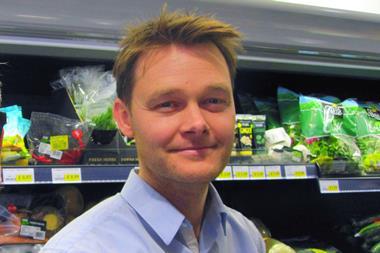
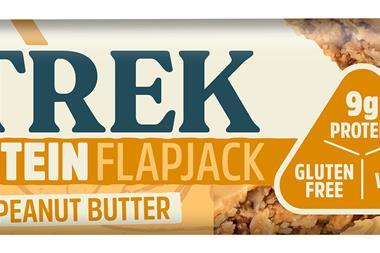

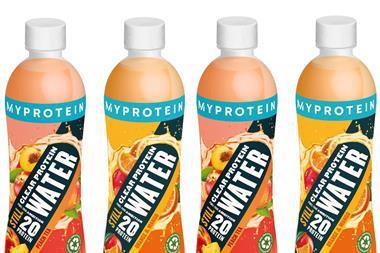







No comments yet